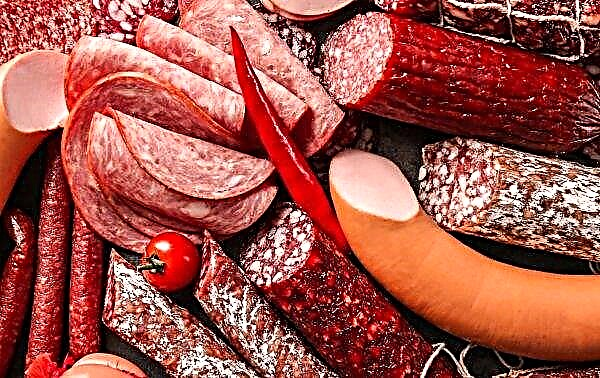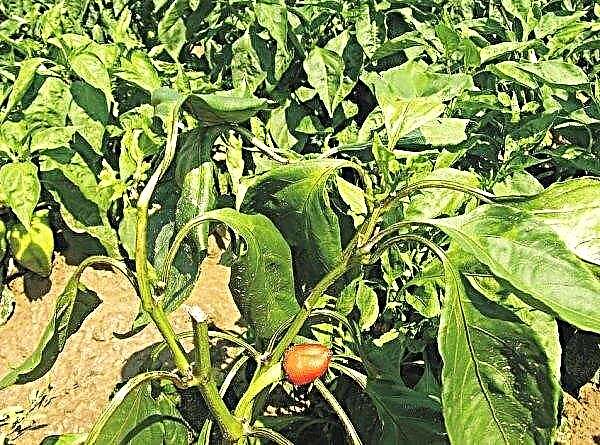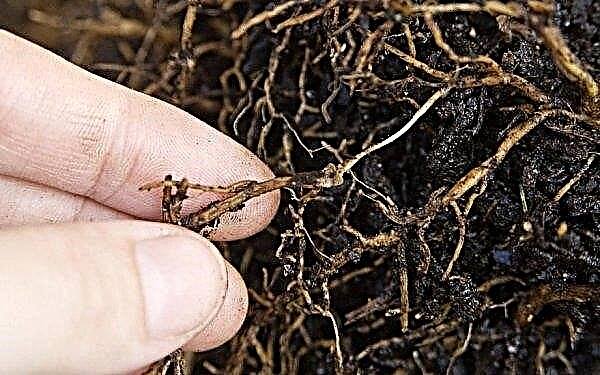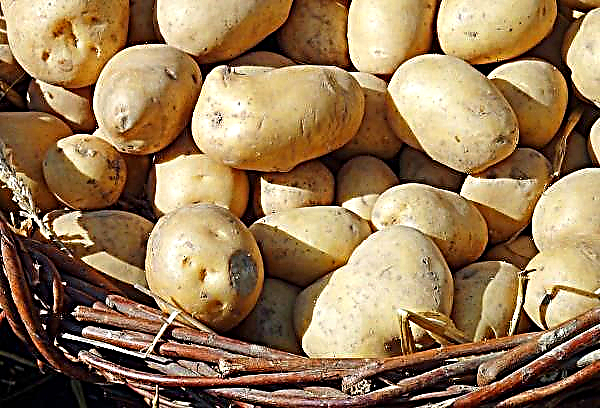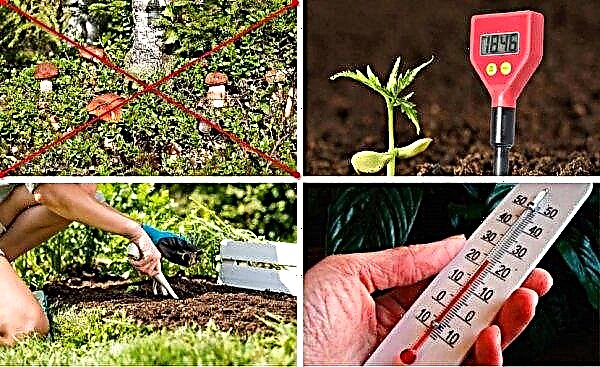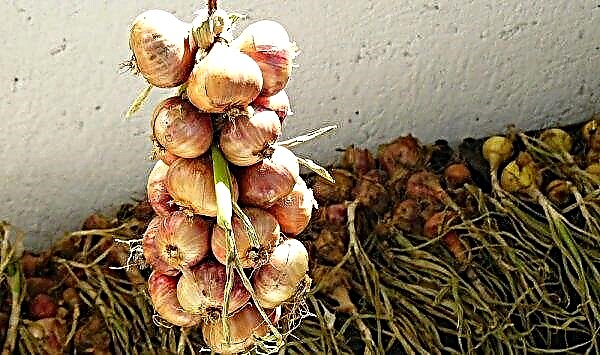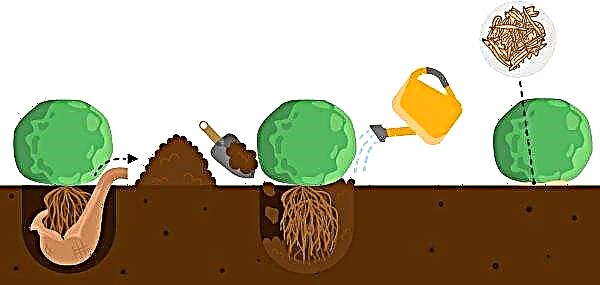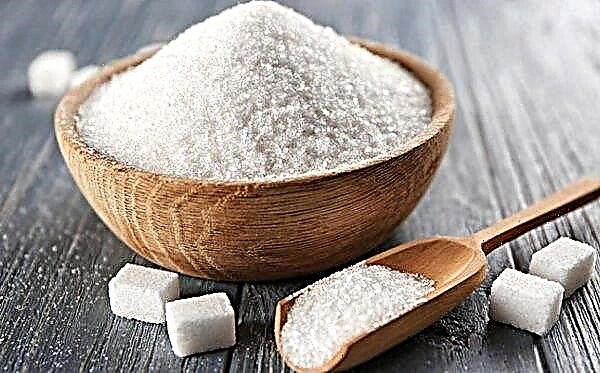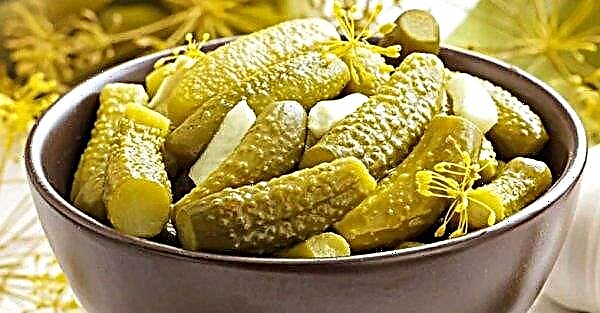When deciding to grow cucumbers on your land, you need to know about the difficulties in agricultural technology of this garden crop in order to protect plants from possible diseases and collect good vegetable crops. Such problems can be solved by treating plants with chemicals, and this is not always safe for health. The article will tell you about the popular methods for treating cucumber diseases that are more gentle, no less effective and not harmful to health.
Diseases and pests of cucumbers
The most common and common diseases and pests affecting cucumber plants include the following:
- Downy mildew. It is localized on the foliage of cucumbers. The main sign of damage is the appearance of a small white spot at the edges of the foliage resembling flour. In addition, the leaves may change their color to a tan and dry at the edges.

- Powdery Mildew. It differs from a false one by the location of the powdery coating, which gradually spreads throughout the entire sheet, both from the outside and from the inside. The leaves then turn yellow, brittle and dry.

- White rot. A serious infectious disease at the beginning of the course passes in a latent form. It is characterized by the appearance of white plaque on the leaves, stems and fruits of cucumbers. If the damaged areas are treated incorrectly or at the wrong time, the plant will begin to darken and subsequently die.

- Olive spotting. It is manifested by the appearance on the foliage of a large number of ulcers and small spots of olive color.

- Rot of the root system. Occurs due to excessively wet soil. The first signs are the appearance of small cracks on the roots and their darkening, yellowing of the foliage, falling of the ovaries.

- Anthracnose. It is characteristic of greenhouse culture. On the infected parts of the cucumber bushes, spore formation of the fungus is active, which leads to the appearance of spotting over a large area, merging into a single whole. Infection occurs by seed spores from infected cucumbers.
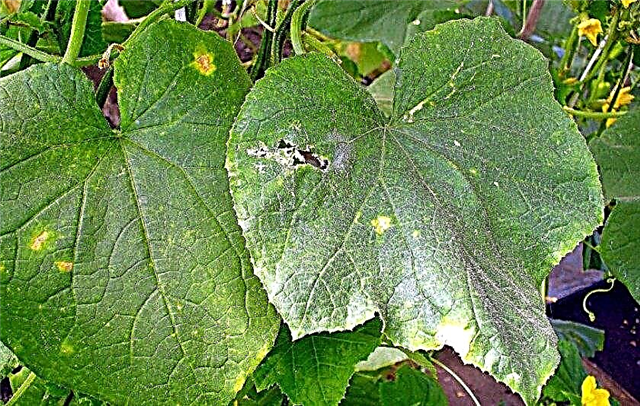
- Spider mite. The parasite settles on the foliage on the back side, sucking the plant's juices, as a result of which round holes remain on the leaves.

- Gourd aphids. Due to the invasion of these insects, the entire plant rots in a short time.

Folk remedies for the fight against diseases
Faced with many diseases of cucumber culture, as well as with the invasion of pests, the gardener may wonder what can be sprayed or how to process the bushes to cope with these problems. Although there are many chemicals to deal with them, experienced gardeners tend to use alternative methods as protection, since they do not require large material costs and are highly effective.
Important! All spraying of cucumbers should be carried out in cloudy weather or after the sun has set: this way the plants will not get burns.
Iodine treatment
Iodine will help to eliminate a number of the following problems on cucumbers:
- Basal rot. It will be effective to treat the shoots with iodine solution (iodine - 1 part, water - 2 parts) at a height of up to 20 cm above ground level.
- Powdery Mildew A similar problem is eliminated with a solution - 1 liter of milk + 10 drops of iodine + 10 liters of water. Mix the components, the resulting mixture is abundantly sprayed with cucumber bushes and soil around them.
 The described procedures must be done 1 time in 3 days until the disappearance of signs of disease, after which cucumbers can be eaten.
The described procedures must be done 1 time in 3 days until the disappearance of signs of disease, after which cucumbers can be eaten.Important! Any therapeutic and nutrient solutions based on folk remedies can not be poured under the roots of cucumbers, but it is better to do this next to the plants, making holes 15 cm from them, into which then pour the indicated liquids.
Wood ash use
Wood ash, since it is a natural alkali, is an effective remedy for parasites (slugs), and also helps to avoid powdery mildew disease of cucumbers.
Ways to use wood ash:
- Powdery Mildew To stop the infection, the foliage is sprayed with an ash solution: 250 ml of ash are poured into 2 liters of water and left to infuse for 3 days. Then the infusion is filtered and 4 g of laundry soap are added. Spraying is carried out 2-3 times a week until the disease disappears, after which the fruits will be suitable for consumption.
- Fighting slugs. To scare away parasites and hinder their movement around the site, the earth must be treated with ash mixed with tobacco dust.

Spraying with garlic solution
Spraying with garlic will be effective in the following problems of cucumbers:
- Downy mildew. As an effective remedy, use a garlic infusion - pour 30 g of ground garlic cloves into 1 liter of boiled water and leave the mixture in a dark, cool room until cool, then dilute the infusion in 9 liters of water. The tool must be sprayed with infected areas at the first sign of a disease.
- Various parasites. In case of damage with a spider mite, aphids and slugs, you can prepare the following remedy - 5 chopped garlic cloves are placed in a jar (1 l), pour 0.5 l of vegetable oil and 30 ml of liquid soap. You need to insist the mixture for 1 day. For spraying, it is necessary to dilute 20 ml of garlic infusion in 0.5 l of water. The bushes are treated with the prepared solution several times until the parasites completely disappear. After that, cucumbers can be consumed after the complete disappearance of both signs of the disease and parasites.
Milk serum
Whey can be successfully used for the defeat of cucumbers with powdery mildew. The presence of mono-acid bacteria in the serum inhibits the activity of fungal spores of this disease. The product forms a thin film on the foliage of plants that protects against the entry of pathogenic spores to it. Apply a dairy product in the following proportion: 1 part of whey per 10 liters of water. Before processing plants, you must first heat the resulting mixture to 25 ° C. They begin to process plants in July, since it is from this time that the culture is most susceptible to diseases. Processing is carried out often (1 time per week) due to the fact that the product has a short exposure period. The fruits can be eaten immediately after the disappearance of signs of damage.
Apply a dairy product in the following proportion: 1 part of whey per 10 liters of water. Before processing plants, you must first heat the resulting mixture to 25 ° C. They begin to process plants in July, since it is from this time that the culture is most susceptible to diseases. Processing is carried out often (1 time per week) due to the fact that the product has a short exposure period. The fruits can be eaten immediately after the disappearance of signs of damage.
Fertilizing plants with mullein solution
A universal remedy for powdery mildew is a solution of cow manure, which is prepared as follows: pour 10 kg of fresh mullein into 10 liters of water, mix and let it brew for a day. Then, from the infusion, you need to make an aqueous solution - dilute 1 part of the infusion in 10 parts of water, mix and spill between the rows (trying not to fall on any parts of the plants), distributing 10 l of the product onto 1 m².
The described composition must be fed bushes 1 time in 2 weeks. The fruits will be edible throughout the feeding season.
Iodine and green
Effective in the fight against parasitic diseases and fungus will be aqueous solutions containing antiseptics - iodine or brilliant green. Means with iodine or zelenka for treating plants are prepared in this way: 10 ml of an antiseptic is added to 8-10 liters of water. Then with such a tool you need to spray all the stems and leaves of cucumbers. After two treatments, the plants will completely get rid of pests and diseases. The fruits can be eaten after the complete disappearance of parasites or signs of disease.
Then with such a tool you need to spray all the stems and leaves of cucumbers. After two treatments, the plants will completely get rid of pests and diseases. The fruits can be eaten after the complete disappearance of parasites or signs of disease.
Did you know? Slightly damaged peel of a cucumber can be "cured" with green stuff. To do this, carefully treat the site of damage with the indicated antiseptic, after which the “wound” will be tightened with a film, and such a vegetable can be stored for several weeks in a cool place.
Prevention of diseases by folk remedies
In order to prevent cucumber diseases and their effective treatment, the following agents are used for spraying bushes:
- Milk. In the form of spraying, it provides protection against various pests, since their organisms are not able to digest lactose. After this procedure, the plants are covered with an invisible film, which delays the onset of various pathogens. The recipe for a prophylactic solution: add 1 ml of greens or iodine to 0.5 liters of raw milk, and then add 25 g of urea (urea can be replaced with 1 tbsp. Laundry soap). The bushes and the land around them need to be cultivated 3 times during the growing season - before flowering, after, and also 7 days after the first ovaries.
- Wood ash. For the preventive protection of cucumber plantings from fungi, an aqueous ash solution is used. For its preparation, it is necessary to sift wood ash, pour 2 liters of boiling water and add 1 tbsp. grated laundry soap. Plants are sprayed with such a solution once every 7 days.
- Rye bread. A spray solution is prepared according to this recipe: soak 800 g of rye bread in 10 l of water and let it brew overnight. In the morning, knead the soaked bread, and add iodine (10 ml) to the container. Dilute 1 liter of the resulting mixture into 10 liters of water and spray them with cucumber plantations once a week.
- Overripe hay. Pour a small armful of hay with 10 liters of water and keep in a warm place for several days, and then strain the infusion. To spray on 1 liter of hay solution, add 1 ml of any antiseptic - zielonka or iodine. Spray cucumbers with the described solution once a week.

Disease-resistant cucumber varieties
Breeders have bred many varieties of cucumbers that are highly resistant to common cucumber diseases. Knowing this will help gardeners to choose the most optimal variety for cultivation on their site.
Did you know? Among the varieties of cucumbers, there is one type of fruit with an unusual appearance, called the “crystal apple” because of the rounded appearance of the vegetable and the bright yellow color of the pulp and peel. To taste, these are ordinary cucumbers.
Among them:
- Finger boy. Hybrid super-early variety (the first fruits appear on the 37th day from the first sprouts). The bushes are branched, with abundant fruiting. The fruits are tuberous, bright green, white-thorny, up to 11 cm long and weighing up to 65 g.

- Masha. Ultra-early high-yielding hybrid with the appearance of fruits on the 37th day after germination. It has a long fruiting period. Fruits are coarse, cylindrical, bitterness is absent.

- Swallow. The variety is ripe, the fruits are harvested already on the 41st day from sowing. Cucumbers from 9 to 14 cm long, with a matte surface, oval-cylindrical, dark green, have blurry stripes and large, with a rare arrangement of tubercles.
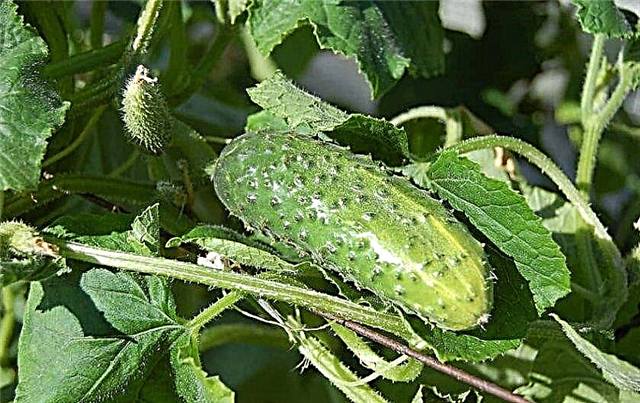
- Natalie. The variety is medium early (bearing fruit for 48 days). Cucumbers are short, cylindrical, green, with tubercles and light stripes; length up to 13 cm, the taste is not bitter.
- Phoenix Plus. The variety is mid-season, bears fruit already on the 45th day and right up to the first light frosts. The fruits are oval and tuberous, dark green, with blurry stripes, up to 12 cm long. Cucumbers with juicy, crispy and not bitter flesh.

- Sir. Mid-early cucumbers (47th day). Fruits are short (up to 14 cm), with large tubercles, cylindrical, bright green, with longitudinal stripes and brown spikes; not bitter.
- Benefit. Hybrid early ripening variety (45 days). Fruits of 120 g, length up to 12 cm, dark green, with small tubercles and white spines. Tastes sweet, crunchy, not bitter.
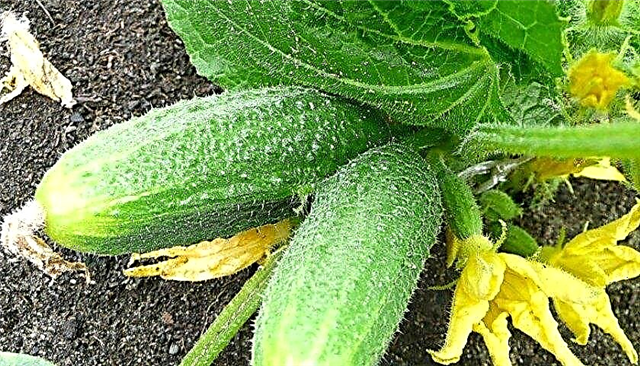
- Crane. Hybrid medium early variety (48 days). Zelentsy oval-cylindrical, with large tuberosity, up to 12 cm long, weighing up to 90 g. The fruits have a thin peel and a delicate, dense, crisp flesh.
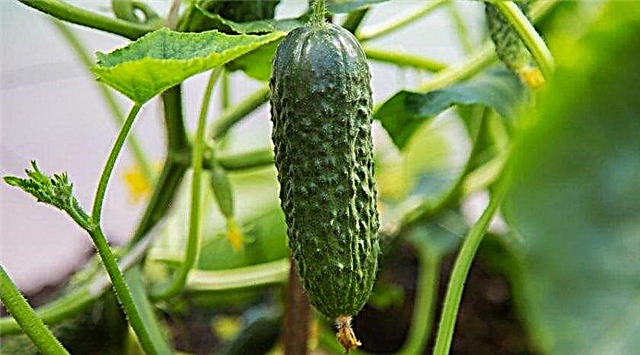
- Fontanel. Mid-season hybrid (up to 55 days). Cylindrical-shaped fruits with a tuberous surface and black spikes. The taste is not bitter, crispy. The mass of fruits is on average 100 g, length - up to 12 cm.

- Darling. Mid-season hybrid (55 days) with coarse-green greens of a fusiform shape. Fruits have a length of up to 12 cm and a weight of up to 90 g, with excellent taste.

All the folk remedies described above for the problems of cucumbers are effective, affordable and do not require tangible financial investments. If they are used correctly and on time, adhering to the indicated dosages, then one can avoid exacerbating all the possible difficulties encountered in the agricultural technology of this garden crop.

















